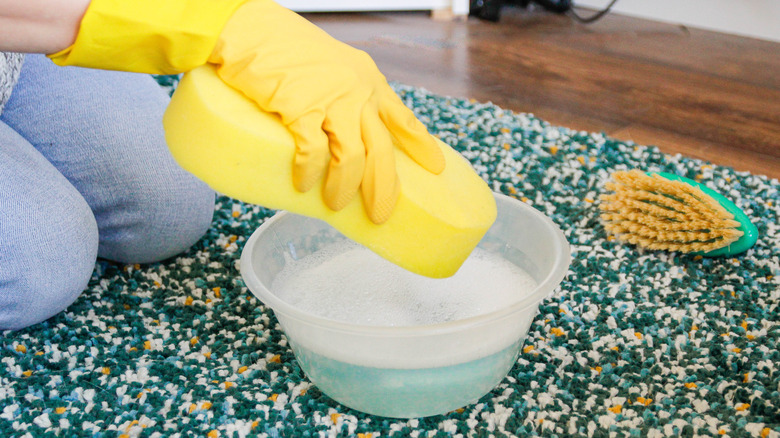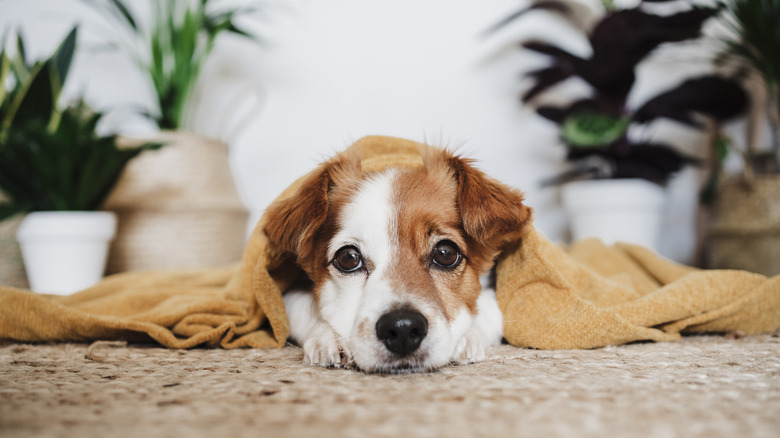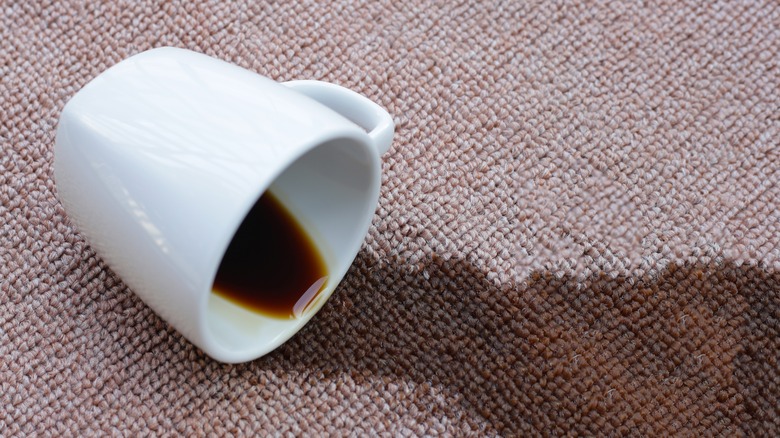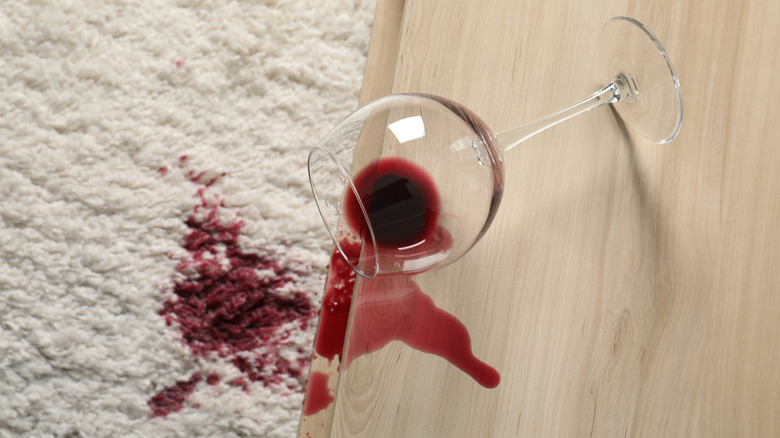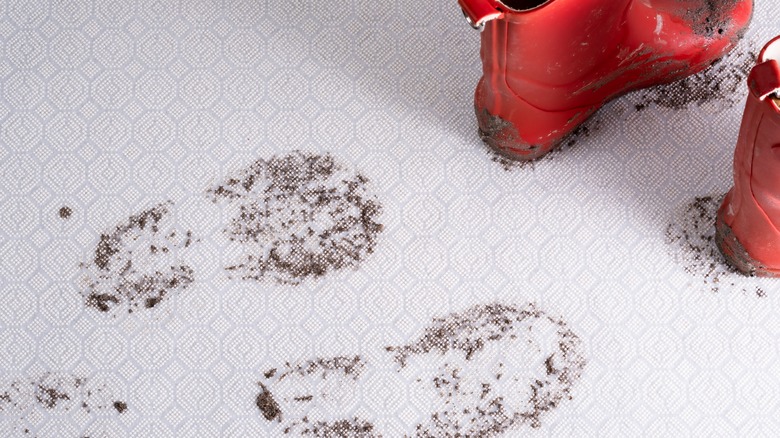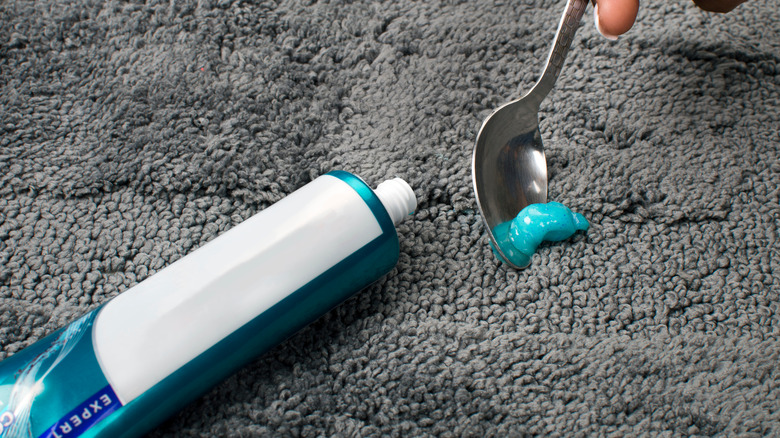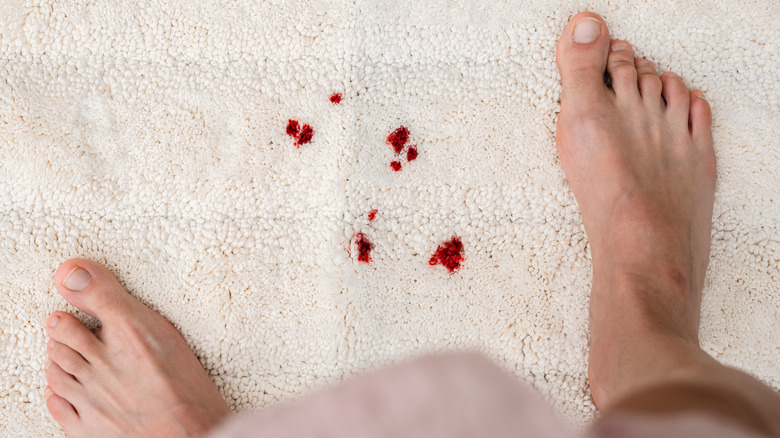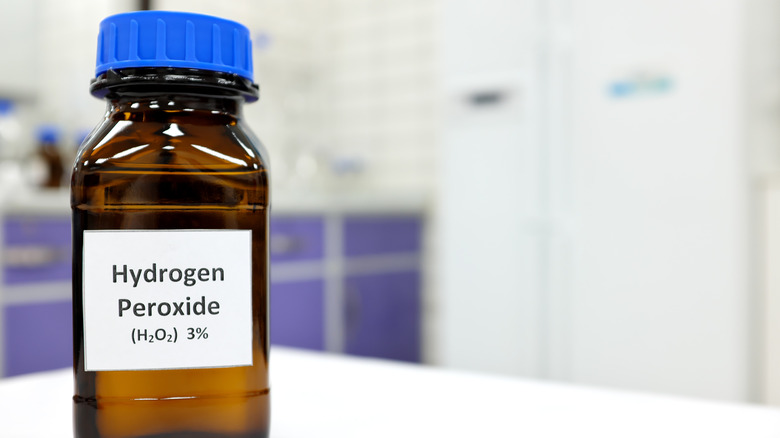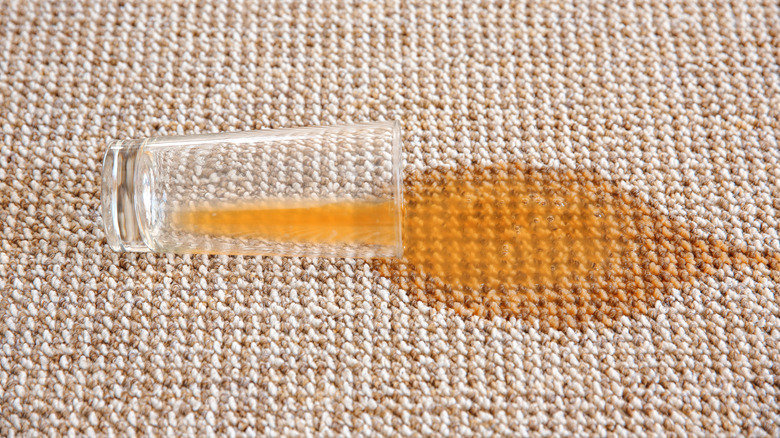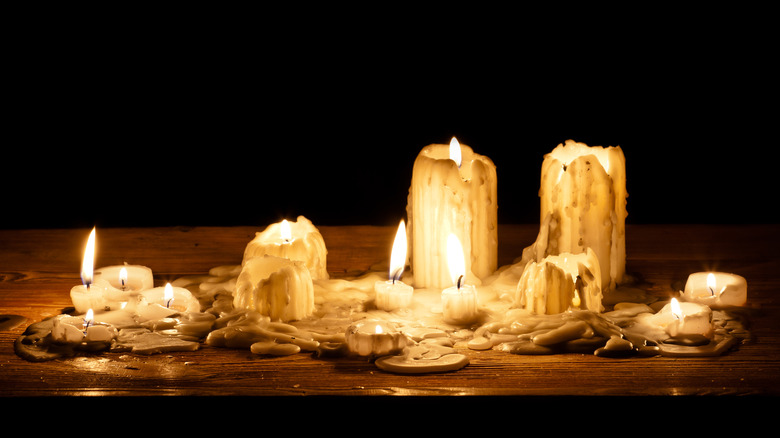How To Clean 9 Common Carpet Stains To Make Them Look Like New
You try your best to keep your carpets clean, but the reality is that accidents happen. Whether your kids run through your home with muddy shoes, your pets have urine accidents, or a guest spills a glass of wine, these substances ought to be dealt with as soon as possible. This involves blotting up the spill with a clean cloth. However, you will also need to assess the damage to your carpet to see if further action is required to help remove stubborn stains.
While commercial carpet cleaners exist, you may be able to use a variety of different items you already have on hand in your pantry or medicine cabinet instead to save money. This can also help cut down on toxic fumes you don't want in your home. Baking soda, hydrogen peroxide, and detergent are among some of these solutions, though they work best for specific types of stains. Here is a closer look at what to use when.
For pet urine accidents, try baking soda
When you have pets, it's expected there will be occasional accidents. If urine spots are allowed to soak into the carpet, however, you not only have to deal with discoloration of the fabric, but unwanted odors, too. Baking soda can help as both a deodorizer and stain-removal agent for pet urine. First, sodium bicarbonate, the active ingredient in baking soda, is an alkaline substance, which can help deodorize the acidic odors of pet urine. When the alkaline and acidic molecules meet, the acidic ones become neutralized, creating a less foul compound. Aside from its odor-neutralizing abilities, sodium bicarbonate can also help clean fresh urine stains by soaking up the liquid that would normally embed itself into the fabric fibers. This draws out the stain, leaving behind a spotless rug. This further supports the reason why baking soda is one ingredient pet owners swear by.
However, this method is most effective on fresh urine stains as it won't be able to soak up old, set-in blemishes. If your pet has just had an accident, sprinkle a large amount out of the container, ensuring that you have completely covered the splotch. Place a damp paper towel over the baking soda and allow it to sit for a few hours before vacuuming. You can repeat this process until the stain is completely removed and your carpet is odor-free.
Baking soda may also help lift coffee stains
Coffee, with its dark color and acidic properties, can be a fabric's worst nightmare, leading to stubborn stains upon contact. The good news is that baking soda is one of the easiest ways to get coffee stains out of your carpet. Its same alkaline action that's used against pet urine can work against other acidic stains such as coffee.
To use baking soda on coffee stains, use the same steps as you would with pet urine stains. Sprinkle the powder over the entire area, and then place a damp cloth over the stain and let it sit for several hours. Once it's dried, vacuum it up. For more stubborn stains, try rubbing the stain with some detergent and then follow it up with a water-and-baking-soda paste. Rub that onto the stain, and wipe it clean with a damp cloth. Repeat if necessary.
Treat red wine carpet stains with club soda
Occasional wine spills happen, but red wine stains are arguably the worst ones to tackle. Before considering harsh chemicals to treat your carpet, you might consider using club soda first. It's believed that club soda may prevent the oxidation process of spilled liquids like red wine from becoming stains. However, there is no scientific evidence this is true, but there is plenty of anecdotal evidence. The catch here is this method appears to be most effective when used on fresh spills.
If you drink red wine, it might be worth having a bottle of club soda handy for the occasional spill on your carpets. First, you can absorb the mess with table salt, and once it turns color, remove it. Then, quickly pour club soda on the stain and dab it clean with a wet sponge dipped in cold water. If the stain remains, you could also follow up with white vinegar and a small amount of detergent to help lift it from the carpet. The biggest catch here is that you may need to use commercial stain removal methods if the red wine has already dried.
Dish soap can help tackle dried mud stains
On a rainy day, it can be challenging to prevent kids, pets, and even adults from tracking in mud on the carpet. While commercial products can certainly get rid of these types of stains, you can consider lifting mud from your carpets with dish soap. Plain, dye-free dish soap is an effective ally against these types of stains because it can tackle mud at a molecular level. When dish soap bonds with water, its molecules attach to those in dirt, oil, and microorganisms, lifting them from the surface and making them easier to wipe away.
To tackle dried mud stains on your carpet, grab a sponge along with a bucket of warm water and dish soap. Try a ratio of 1 teaspoon of dish soap to every 1 pint of warm water. Gently blot the mud stain with a sponge, making sure you work the soapy water along the entire spot without scrubbing. Rinse the soapy spot with a new cloth with warm water and blot with a dry sponge or towel.
Remove toothpaste with dish soap and white vinegar
If you have carpet in or near your bathroom areas, you might have unknowingly spilled toothpaste, only to find the stain long after it has dried. As with mud stains, dish soap might work to lift toothpaste stains from carpet too, especially when it's combined with white vinegar. The molecules in dish soap can help break apart stains and lift them from surfaces, making them easier to wipe clean. The addition of vinegar may have an additional benefit here. In theory, the acidic nature of vinegar could help break down alkaline substances such as toothpaste.
To effectively remove toothpaste stains from carpet, you can create a DIY spot remover treatment before spending money on commercial products. First, combine 1 teaspoon dish soap and 1 teaspoon white vinegar in 1 quart of water. Apply to the stain with a sponge or cloth, gently rubbing the toothpaste so it lifts from the carpet. Rinse with clean water and blot with a dry towel. You may need to repeat the process, particularly if you're dealing with bright-colored stains.
Treat blood stains on light-colored carpeting with rubbing alcohol or hydrogen peroxide
Blood stains from cuts and injuries can be challenging but not impossible to remove from carpeting. With this in mind, you might consider two ingredients: rubbing alcohol or hydrogen peroxide. Isopropyl alcohol (70%) is the type of rubbing alcohol you can find at a drugstore, and is capable of dissolving hard-to-treat stains. Hydrogen peroxide (3%) is also available at drugstores, and acts as a mild bleaching agent to help easily remove blood stains from carpet. However, never combine them together.
Also, keep in mind this process might bleach dark-colored carpet, so you might consider testing a small area first. If you do wish to proceed, apply a small amount of rubbing alcohol to a cotton ball and gently blot the stain first. If the blood stain has lifted, you can stop here. However, if the stain persists, you can apply bleach-free and lanolin-free dishwashing detergent and water and blot some more. Rinse with water and dry to see if any of the stain remains. Hydrogen peroxide can be used in small amounts as the final step if some of the stain is still left behind. Allow the hydrogen peroxide to air dry.
Remove rust stains from light-colored carpeting with hydrogen peroxide
If you notice a brownish-orange ring on your carpet after setting down a metal can, you could be dealing with a rust stain. However, using small amounts of hydrogen peroxide can help get rid of these stains. Since it's an oxidizing agent, it can break down the iron oxide (which is rust) into smaller, more manageable compounds, making it easier to lift from the carpet fibers. Keep in mind this method may work best for light-colored carpeting due to its bleaching capabilities.
To use this household essential for lifting rust stains from carpet, blot directly onto the stain with a cloth or paper towel until the rust stain lifts. You can also combine a 1:1 ratio of hydrogen peroxide and water into a spray bottle. Then, spray directly over the rust stain, and allow it to sit for a few minutes so It can penetrate the blotch. If it's a stubborn stain, gently scrub it with a hard bristle brush to loosen the rust from the fibers. Blot the solution with a dry cloth. Repeat the process if necessary until the stain is completely removed.
Tackle stains from juice spills with dishwashing detergent
Whether you're dealing with orange, cranberry, or another type of juice, such spills on the carpet need to be dealt with right away before they become permanent stains. Instead of buying a commercial cleaner, you may consider detergent you likely already have at home. It's thought that the molecules in dishwashing detergent form "supermolecules" when they merge with water. After this, the detergent and water create micelles that can lift stains from the surface they're adhering to, removing blotches like those caused by juice spills.
First, combine 1 teaspoon of detergent and 1 cup of warm water. Use a cloth or sponge and blot the mixture directly over the stain. You may also wish to follow this up with a small amount of white vinegar. Blot with clean water, and then follow up with a dry cloth or sponge to help remove the water. Be careful not to over-wet the carpet, as this will be challenging to blot large amounts of water.
How to remove candle wax from carpet
Even with occasional use, candle wax accidents can happen. While the wax is difficult to remove from carpeting, you still have DIY options before resorting to commercial products. The best way to get candle wax out of carpet involves a multi-step process of freezing, scraping, and then absorbing the wax with heat. Overall, the idea here is to get the wax back to a softened state for removal without damaging your rug.
First, place ice in a resealable plastic bag and then put it on top of the wax stain to help lift it from your carpet via freezing. Then, take a butter knife and gently scrape the wax off the fabric. Once you've scraped off as much of the wax as possible, place clean paper towels over the spot, followed by a warm clothing iron on top. This will help to absorb the remaining wax from the carpet. While effective, you may still need to follow this with a dry cleaning solvent to remove any remaining traces of wax.
